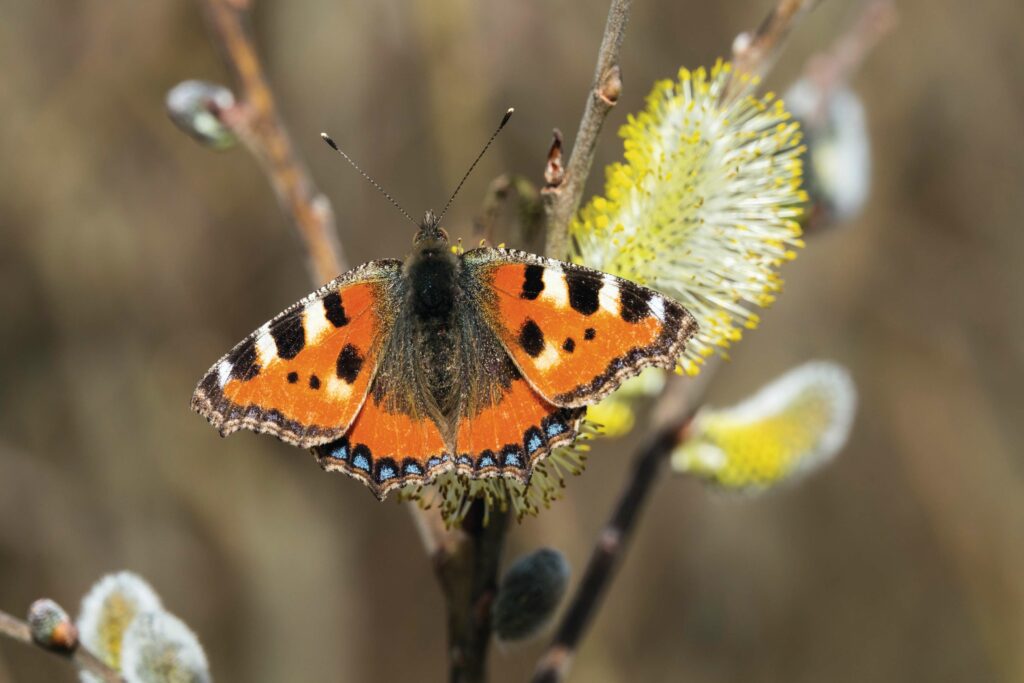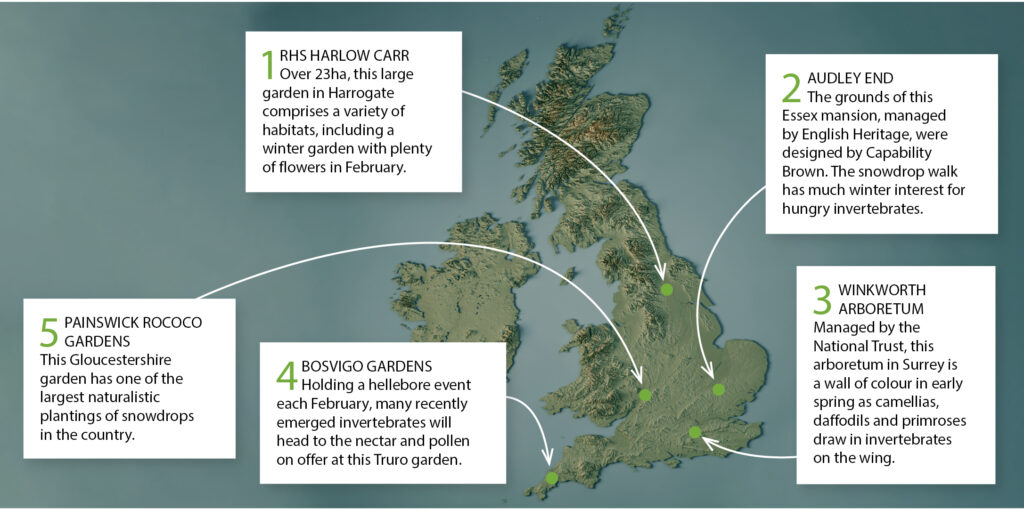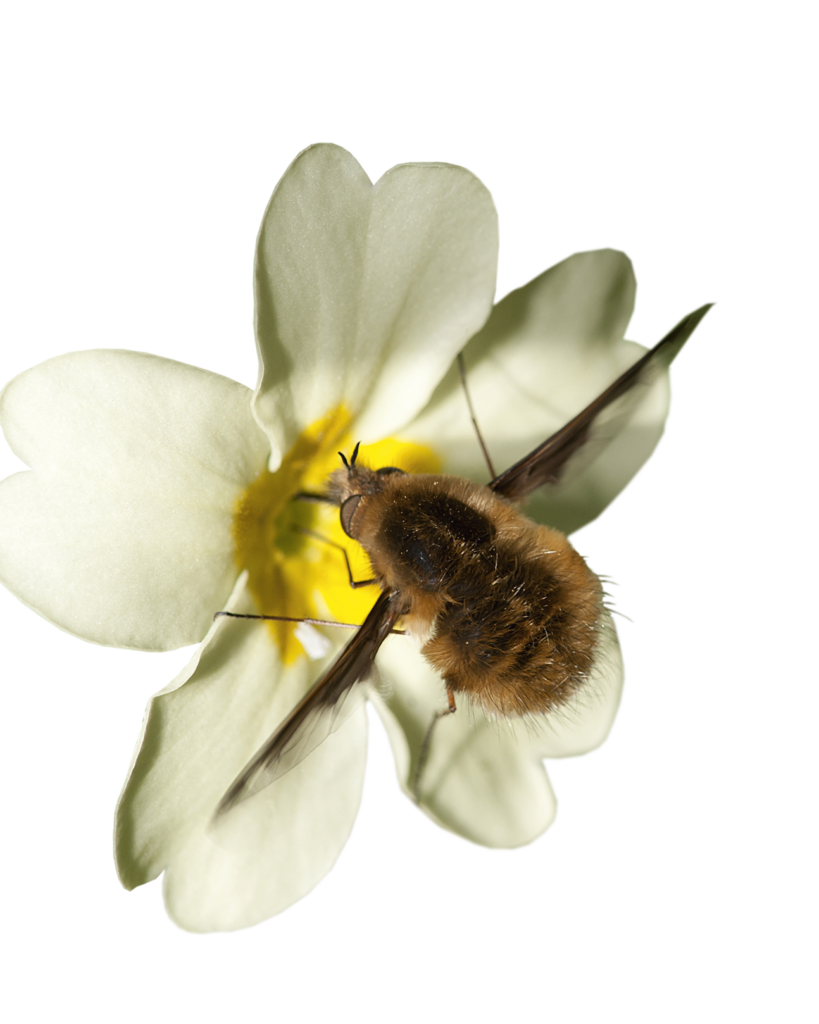
Mike Dilger’s Wildlife Spectacles
The broadcaster, naturalist and tour guide shares the most breathtaking seasonal events in Britain
I’m coming out
EMERGING BUTTERFLIES AND BUMBLEBEES
Catch pollinators searching for nectar on sunny February days, fresh from their winter slumber

WITH SPRING ON THE VERGE OF sticking its head above the wintry parapet, naturalists often adopt different signposts to herald the season’s arrival according to their own specialist interests. Birdwatchers, for example, will be listening out for their first chiffchaff, while botanists will be scouring the hedgebanks for early flowering violets. Those with a penchant for invertebrates, however, will only acknowledge spring to have officially sprung once they’ve spotted the season’s first butterflies and bumblebees on the wing – having freshly emerged from their winter slumber.
Of course, winter itself is not an invertebratefree zone, as evidenced by winter gnats and a few hardy moths, for example. But the cold temperatures and lack of feeding opportunities give most of our six- and eight-legged friends little option other than that of perishing or hunkering down to wait for the good times to return. While the term hibernation is used for overwintering invertebrates, it is technically more applicable to mammals, which lower their metabolic rate. The correct definition for invertebrates is diapause – astate of temporary dormancy.
Certainly, for butterflies, out of the 59 species recorded here regularly, the majority see out the winter either as caterpillars, eggs or pupae, with only five overwintering in adult or imago form. Adult brimstone butterflies, for example, tend to overwinter amongst tangles of bramble or ivy, while the dead-leaf-mimicking comma butterflies are so cryptically camouflaged that few are ever found. Peacocks, small tortoiseshells and red admirals, however, appear more associated with holes and hollows, which explains why some end up in unheated sheds, garage and attics.
“Early flowering lungworts, primroses, hellebores and willow are targeted”
By contrast, the only bumblebees that overwinter are the newly mated queens, while the old queens, worker bees and males from all of Britain’s 24 remaining species die off by late autumn. Digging about 10cm down into well-drained soils, the queens are thought to favour north-facing banks to avoid any winter sun, which might heat up the soil prematurely and trick them into emerging before spring. Banks also help ensure that the bumblebees avoid being flooded out. Early bumblebees and bufftailed bumblebees are the first bumblebee species to appear in February.
How invertebrates can effectively turn themselves off, while still preserving the tissues and mechanisms needed to flick the ‘on’ switch, is not clearly understood. This state of arrested development means oxygen consumption is negligible, thereby helping them manage their fat and carbohydrate stores to last until they can feed once more in the spring.

Additionally, the energy saved can be used to produce proteins and sugar alcohols. Acting like antifreeze, these products help protect the insect’s structures and membranes from being damaged by any combination of the cold, dehydration and insufficient oxygen.
Temperature and day length undoubtedly play a key part in helping invertebrates decide when to emerge from their dormancy. So warm and sunny days from February onwards are the best times to catch freshly emerged adult butterflies and queen bumblebees on the wing. Having woken up on the verge of starvation, both will need to locate a nectar source as a matter of urgency, with early-flowering lungworts, primroses, hellebores and willows all targeted. Queen bumblebees will consume pollen too, which helps develop their ovaries.
Once satiated, the bumblebees’ and butterflies’ behaviour diverges once more. The queen bumblebee’s next task will be to find a suitable hole in the ground to rear her brood, while the freshly emerged adult butterflies will only have one item left on their checklist – that of passing on their genes. After this task is completed, the rigours of dormancy, feeding and mating will finally catch up with them.
Did you know?

Confusingly, only queen buff-tailed bumblebees have buff-coloured tails; workers and males look very similar to white-tailed bumblebees
TOP FIVE PLACES
Gardens to enjoy the first butterflies and bumblebees of the year (entry fees apply).

LOOK CLOSER
Warming up
To generate the power needed for flying and foraging, bumblebees must raise their temperature to above 30°C. The queen achieves this by uncoupling her wings from the flight muscles, before rapid contractions of the muscles generate heat. While this shivering only occurs internally, a pumping of the abdomen, to draw in oxygen, is a sure sign she’s hotting up.
Bumblebee mimics
With rounded, hairy abdomens, early emerging bee-flies could easily be mistaken as bumblebees. Being flies, they only possess two wings, instead of four, and are characterised by a long straight proboscis.

Do your bit
Many butterflies are declining, or spreading northwards, probably due to climate change. By sending in your sightings to Butterfly Conservation’s Butterflies for the New Millennium recording scheme you will be contributing to an important data set.